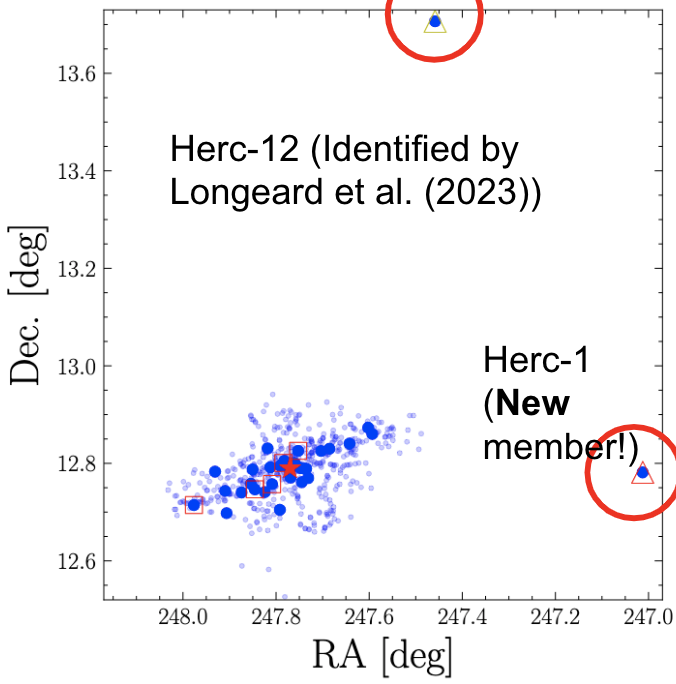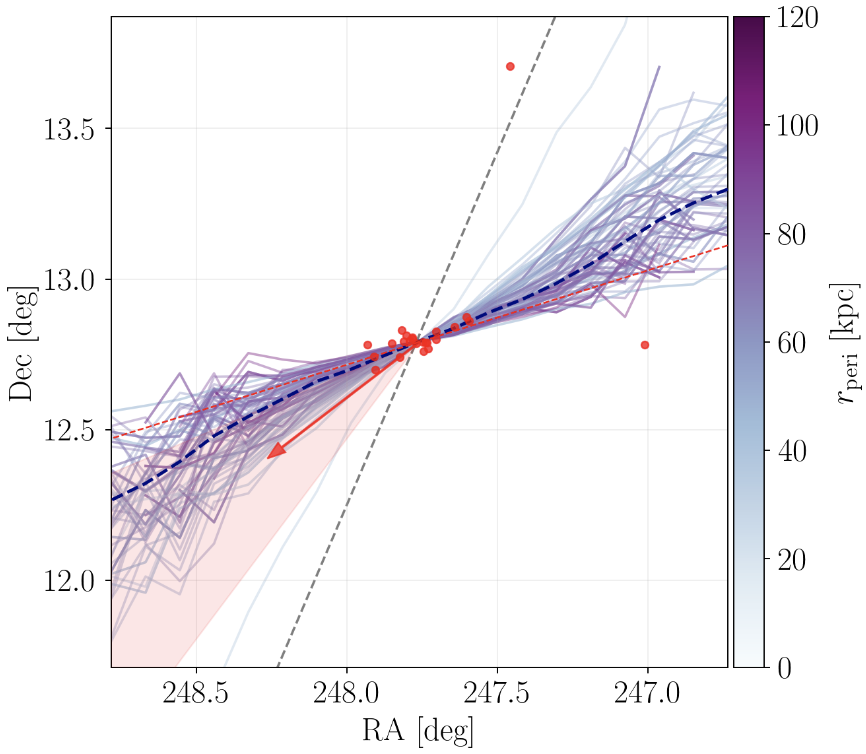Signatures of tidal disruption of the Hercules ultra-faint dwarf galaxy
An unexpected decline in the Milky Way's circular velocity curve at the outer edge of the disk
Ultra-faint dwarf galaxies (UFDs) are small, dark matter-dominated galaxies orbiting the Milky Way, recently discovered thanks to large-scale sky surveys like the Sloan Digital Sky Survey and the Dark Energy Survey. Nearly 60 UFDs have been identified, and they are of particular scientific interest due to their extremely low mass and high dark matter content, making them ideal laboratories for testing galaxy formation models and exploring the properties of dark matter. UFDs are also crucial for understanding the low-mass end of the halo mass function and the dynamics of dark matter interactions on small scales.
Stellar tracers in UFDs are key to determining their mass and dark matter density profiles, with the velocity dispersion of stars providing insights into their total mass and internal structure. These kinematic measurements help bridge the gap between theoretical dark matter models and observations, making UFDs valuable for testing predictions about how dark matter behaves in the universe. UFDs also offer an opportunity to study tidal interactions with the Milky Way, as these small systems may be disrupted by the gravitational forces of their host galaxy, further illuminating their internal structure and mass distribution.

In this study, we present the largest clean sample of member stars in the Hercules UFD, combining new spectroscopic data from Magellan with previous studies to build a catalog of 33 confirmed Hercules stars. This new sample includes two distant members, Herc-1 and Herc-12, which provide critical data for constraining the system’s velocity gradient and potential tidal disruption. Our analysis also delivers the most precise measurements of Hercules’ systemic velocity, velocity dispersion, and proper motion, while revealing a lower-than-expected velocity dispersion, likely due to the removal of contaminant stars and binary systems.
Hercules shows signs of tidal disruption, supported by the elongated shape of the system and the locations of distant members. Our dynamical modeling suggests that the elongation of Hercules may be explained by tidal interactions with the Milky Way, and the system’s tidal radius at pericenter could indicate that Herc-1 and Herc-12 were tidally stripped from the galaxy. This study provides new insights into the dynamical state of Hercules, offering a clearer picture of how UFDs interact with their host galaxy and helping to refine our understanding of dark matter on small scales.
In summary, our work presents new evidence of tidal disruption in Hercules, highlighting the importance of identifying distant member stars and accounting for foreground contamination and binary systems. These findings advance our understanding of UFDs and their role in probing dark matter properties, while emphasizing the value of future observations to further investigate the dynamics and evolution of these enigmatic galaxies.
